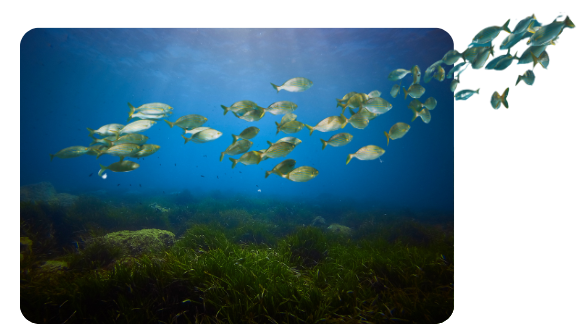Story
Peat and pressure in pristine waters: investigating environmental change in the Falklands
15 August 2025
PML’s Professor Andy Rees reflects on three decades of research in the remote Falkland Islands, exploring the growing environmental pressures in a region long considered one of the world’s most unspoiled.
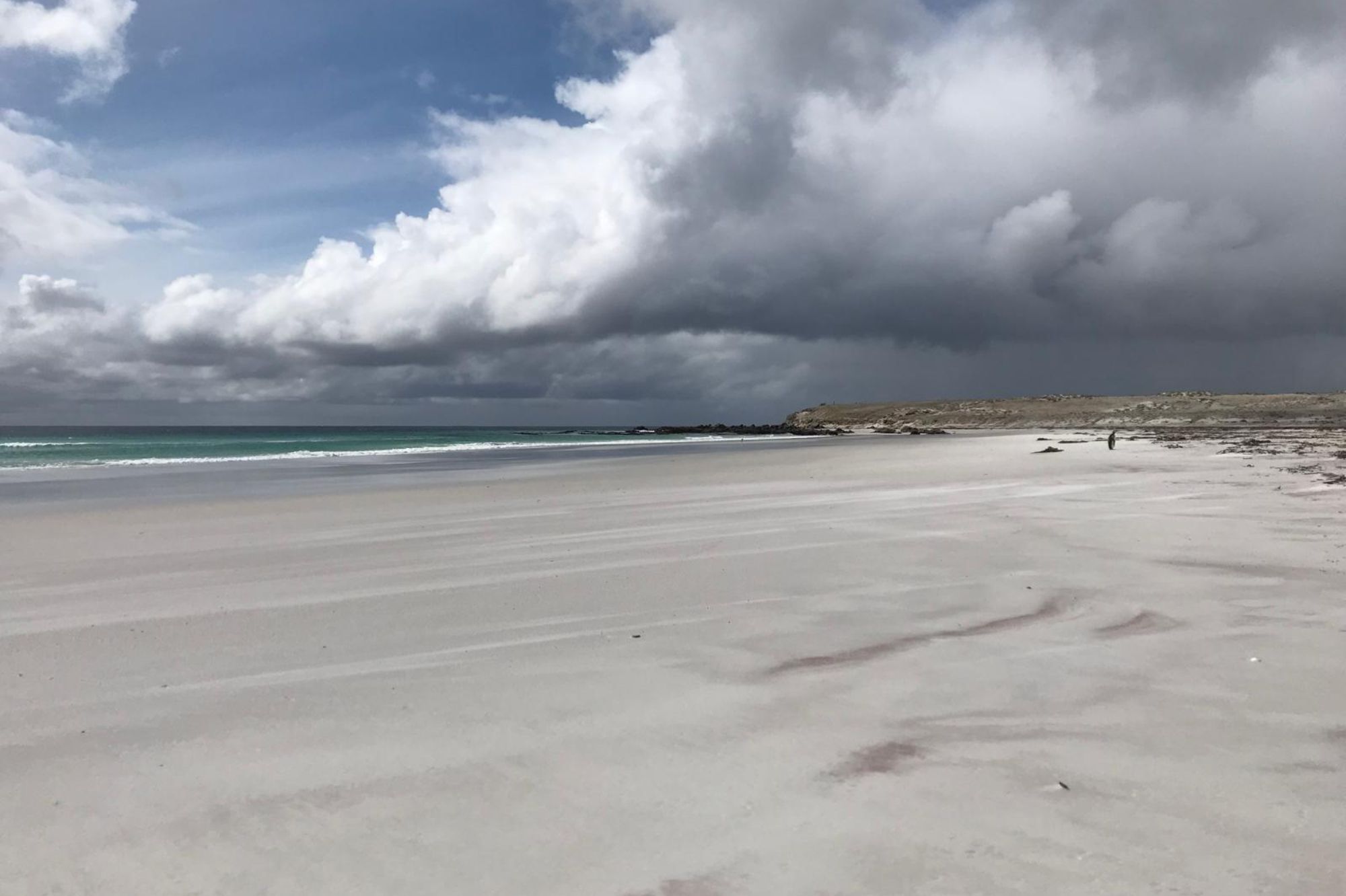
Professor Andy Rees first set foot in the Falkland Islands in 1992, not knowing it would mark the beginning of a scientific journey set to become a long-term commitment to a fragile and fascinating region. Since then, his work has taken him from ship decks to estuaries, and from peatlands to parliamentary meetings – all in pursuit of understanding and protecting this extraordinary environment.
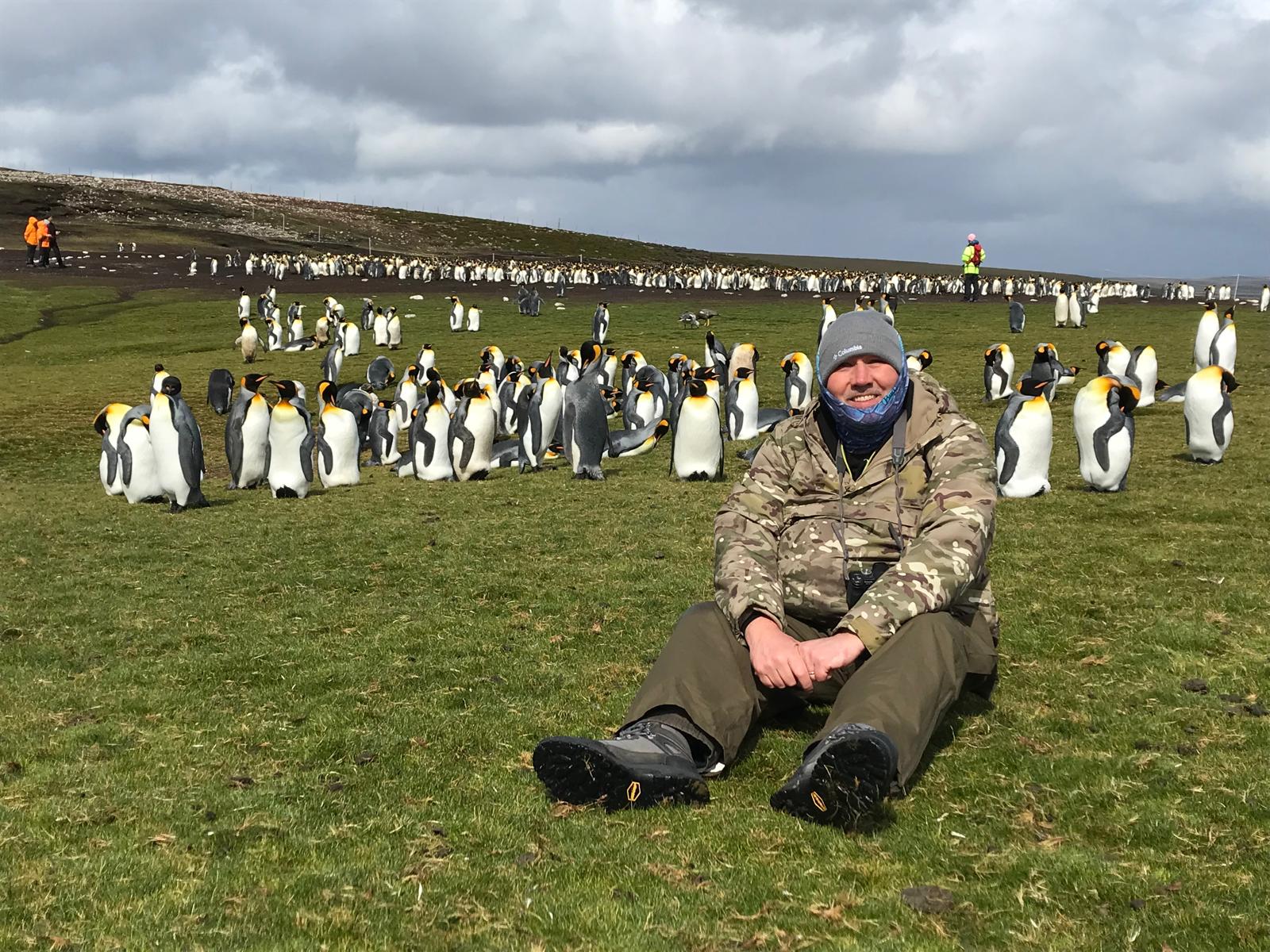
Image caption: Professor Andy Rees smiling at the fore of a King Penguin colony at Volunteer Point, East Falkland. The Falklands are home to five species of penguin, including the world’s largest Gentoo population, and around one million penguins nest on the islands each summer.
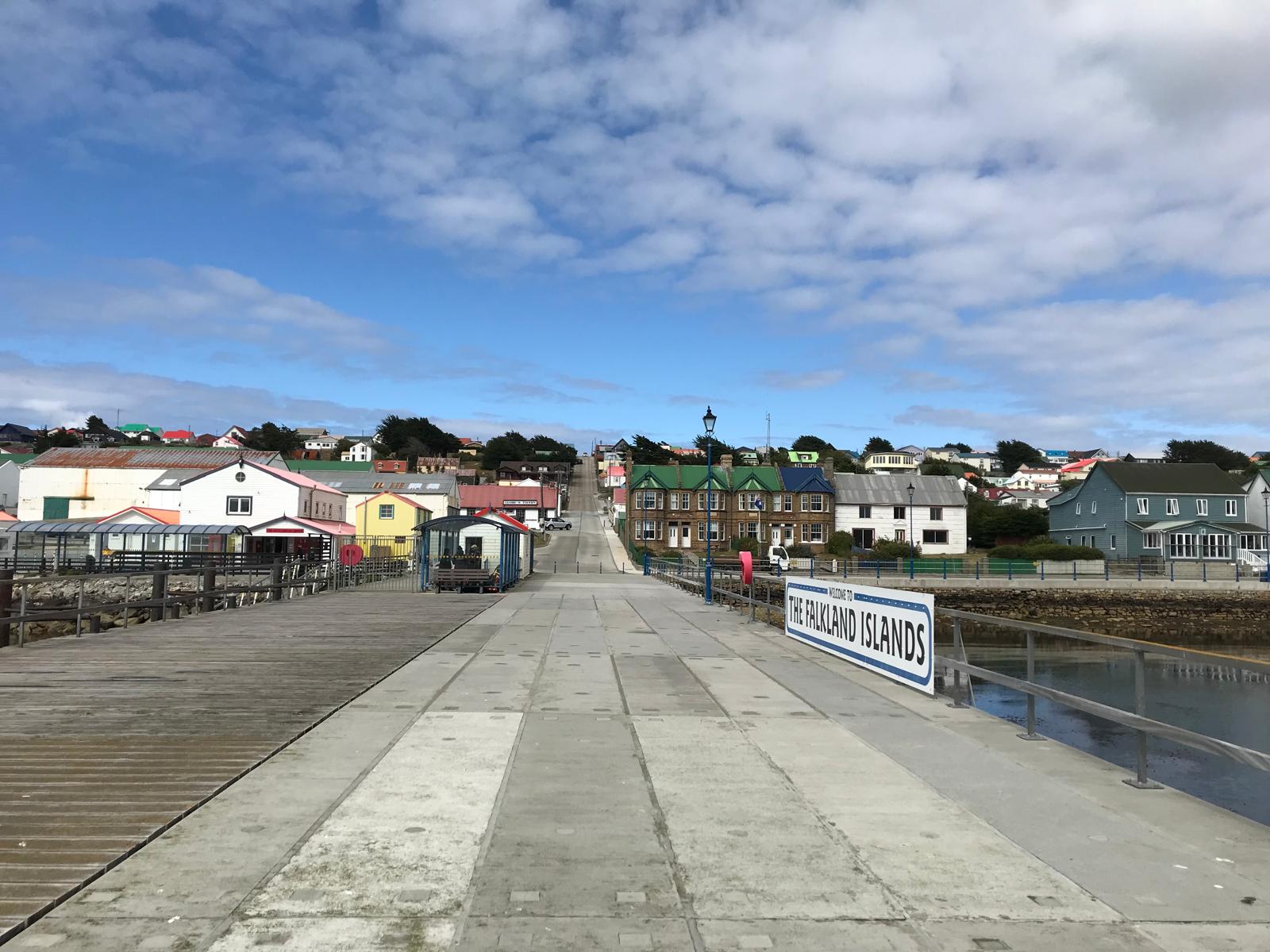
Image above: Port Stanley, Falkland Islands. Stanley is the only town – and capital city – of the Falkland Islands. About two-thirds of the people that live in the Falklands reside in Stanley. Image credit: Prof Andy Rees.
“Most of my visits to the Falklands have been to either join a ship or getting off a ship before returning to the UK, as the Falklands provide a southern base for the British Antarctic Survey and an excellent logistics stop for the other UK research vessels.”
“My first visit was in 1992, when I joined the RRS James Clark Ross for a research cruise to the Bellingshausen Sea. Since then, I have made several ship-based re-visits, and in 2017, I was lucky enough to meet Dr Paul Brickle, Chief Executive of the South Atlantic Environmental Research Institute.”
“At this time, myself and PML colleagues had been collecting samples from several Falkland rivers and estuaries as a part of our Natural Environment Research Council-funded LOCATE (Land-Ocean Carbon Transfer) project with colleagues from UK Centre for Ecology and Hydrology, and the National Oceanography Centre. This work was designed to investigate the processing of river derived organic carbon and nutrients within the estuarine waters.”
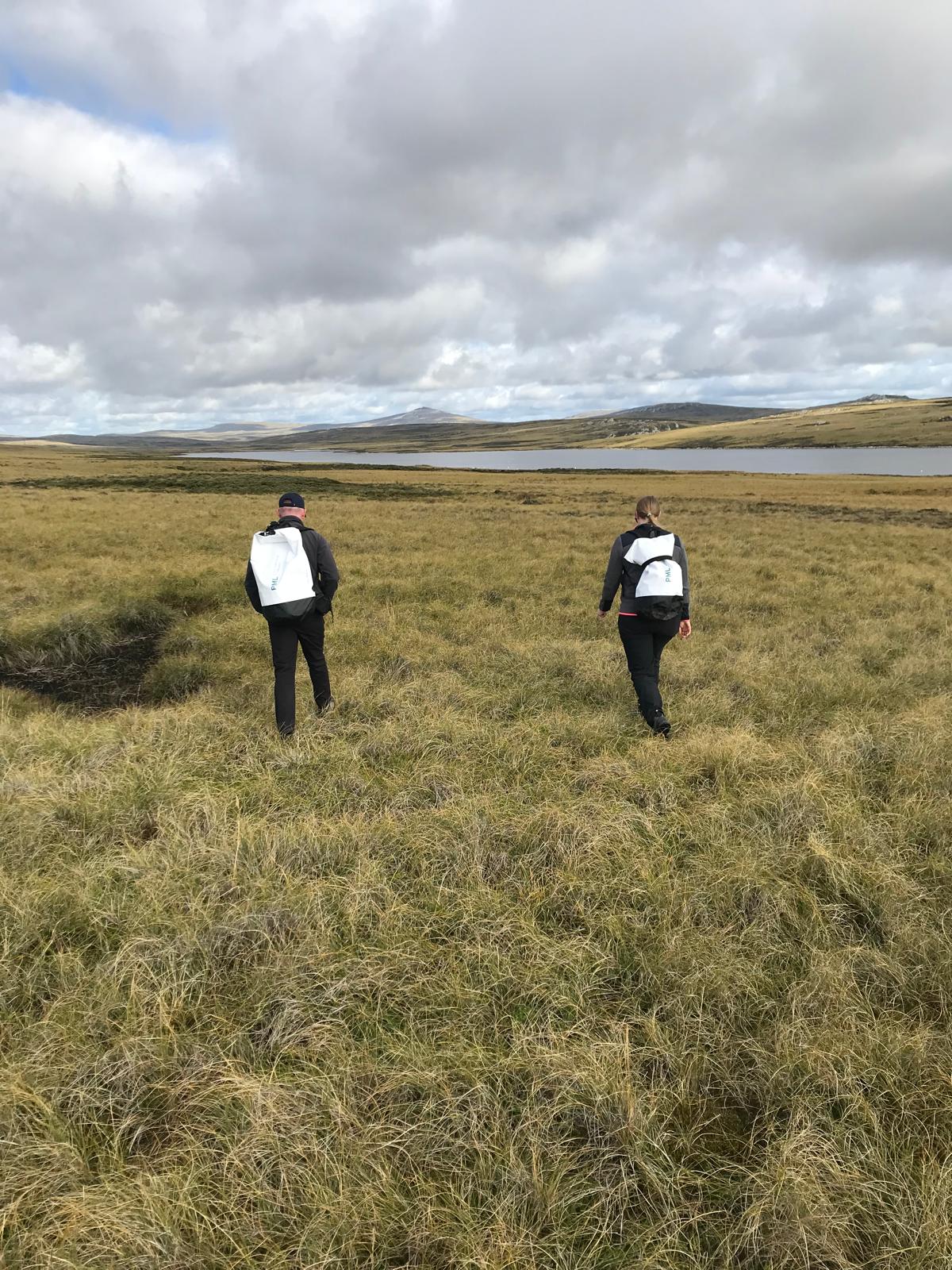
Image above: PML’s Dr Glen Tarran and Dr Sarah Breimann pictured during a recent visit to the Falklands, crossing peatland to carry out scientific investigations. Image credit: Prof Andy Rees.
“During subsequent conversations with Paul, I learned of the concern that he and others had surrounding the erosion of Falkland peatlands, and its deposition on the seabed of many coastal areas. Paul’s team had noted the absence of filter feeding organisms especially impact filter feeders with small pore size like sponges and ascidians (sea squirts) and also barnacles and filter feeding polychaete worms in areas of high peat deposition which showed an overall reduction in biodiversity.”
“It seemed to me very likely that not only would this peaty material smother areas of the seabed, with detrimental impacts on flora and fauna, but that it would likely be having significant impacts on seawater chemistry and biogeochemical cycling.”
“Whilst the Falklands are near pristine and host a huge richness of terrestrial and marine flora and fauna, they are very sensitive to anthropogenic disturbance which includes localised issues of overgrazing by the islands’ 500,000 sheep, but also reveals a vulnerability to climate change, with one particular issue relating to decreases in rainfall which has resulted in the drying of ponds and the subsequent erosion of exposed soils.”
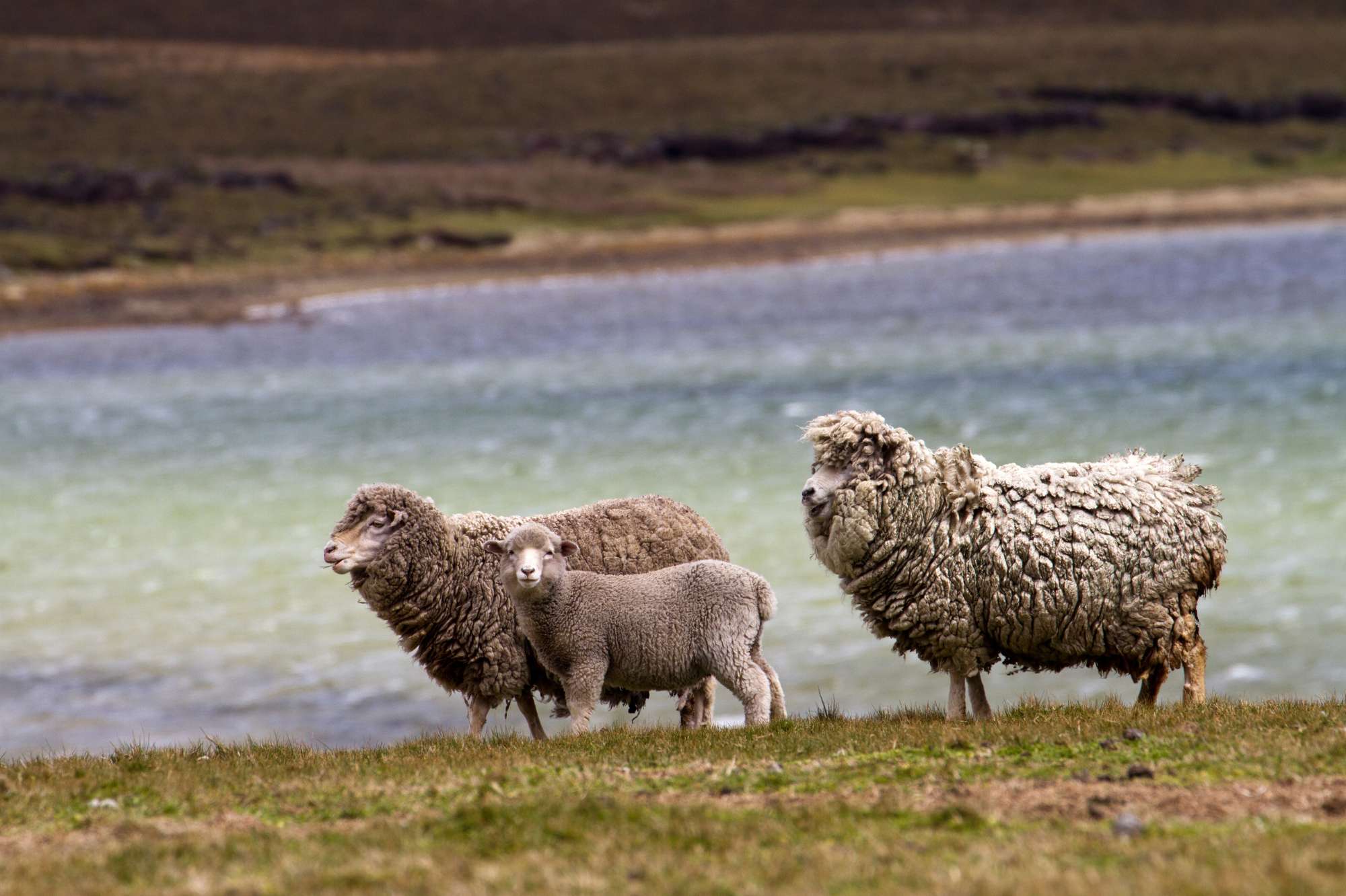
Image above: The human-to-sheep ratio in the Falklands is considerable, with around half a million sheep on the islands. Cheviot sheep were introduced in 1851 by the Falkland Islands Company to produce wool, with numbers peaking at 807,000 head at the end of the 19th century.
“In March 2024, I led our first Plymouth Marine Laboratory / South Atlantic Environmental Research Institute (SAERI) field investigation of this issue as a part of our NERC-funded project FOCUS, and we centered our attention on the waters surrounding the heavily grazed Middle Island, which is very close to the Naval port of Mare Harbour, on East Falkland.”
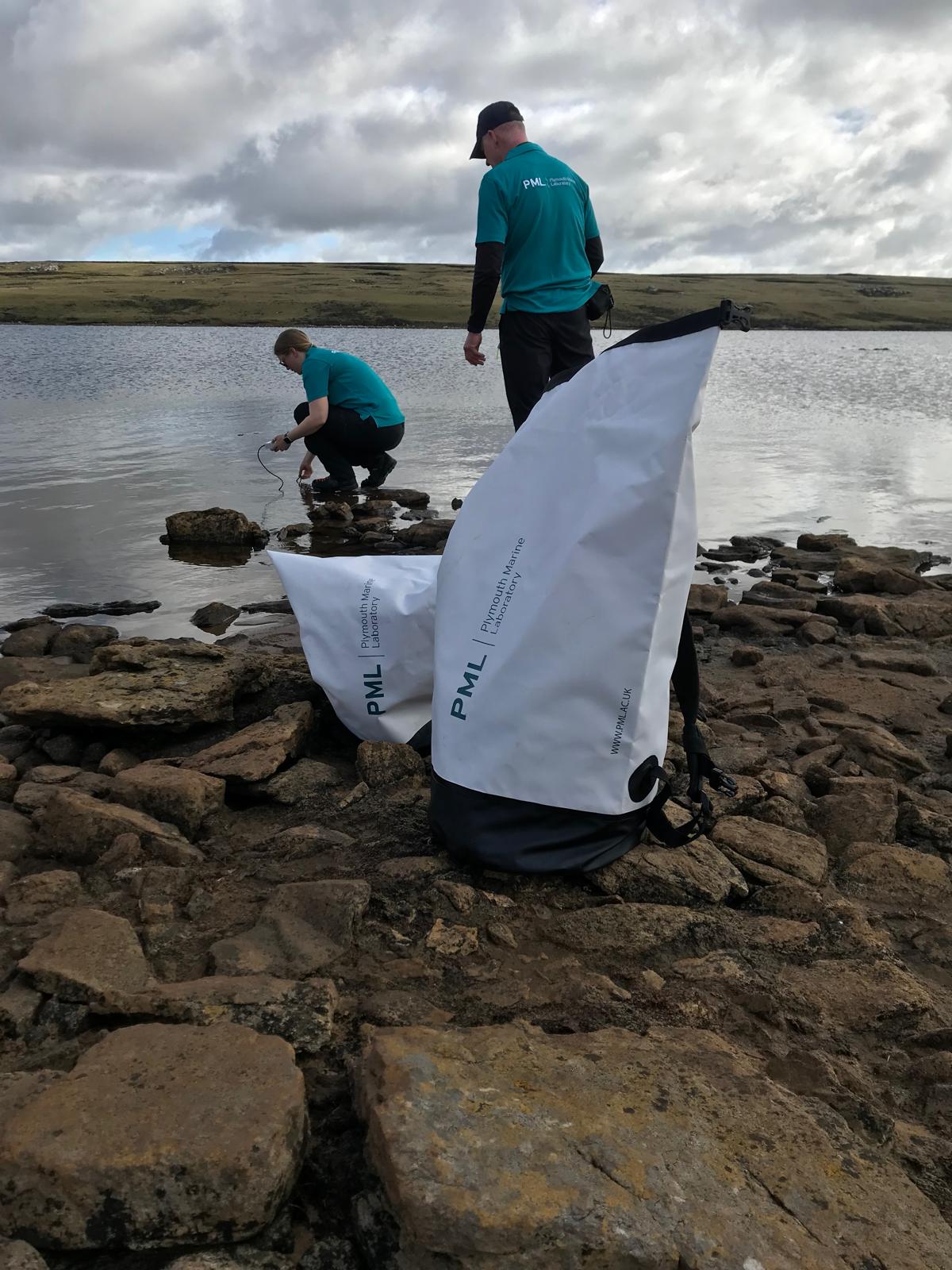
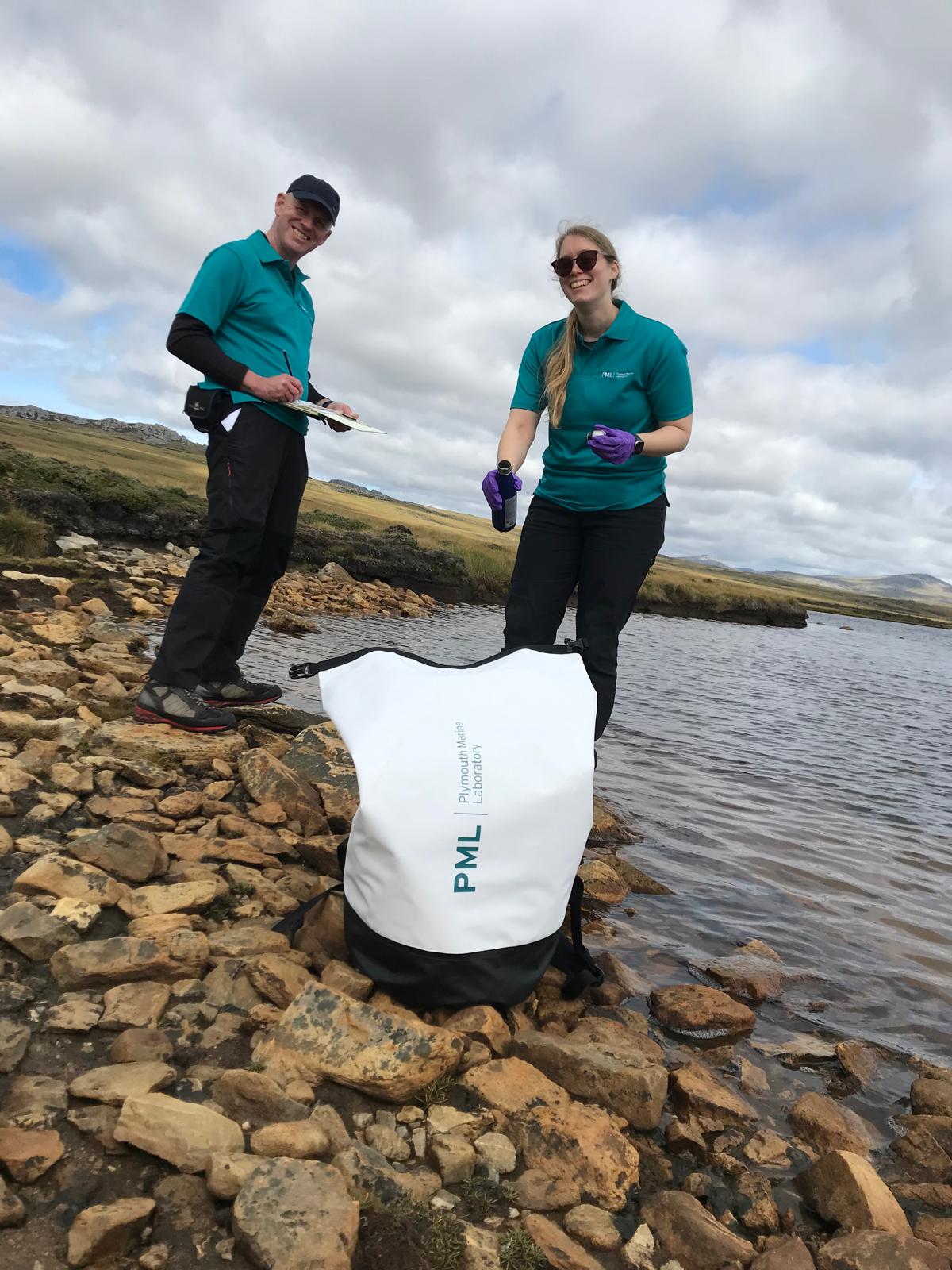

Images above: Andy and the team collecting samples from several Falkland rivers and estuaries.
“Our investigations to date have revealed high enrichment of carbon and nitrogen (approximately 450 and 300 times the natural levels respectively), which has led to intense biological remineralisation of this organic material resulting in oxygen depletion, carbon dioxide enrichment, and increases in mineral nutrients. We will be returning later this year to further investigate the waters around Hummock Island in West Falkland, where Paul and his team first identified this occurrence.”

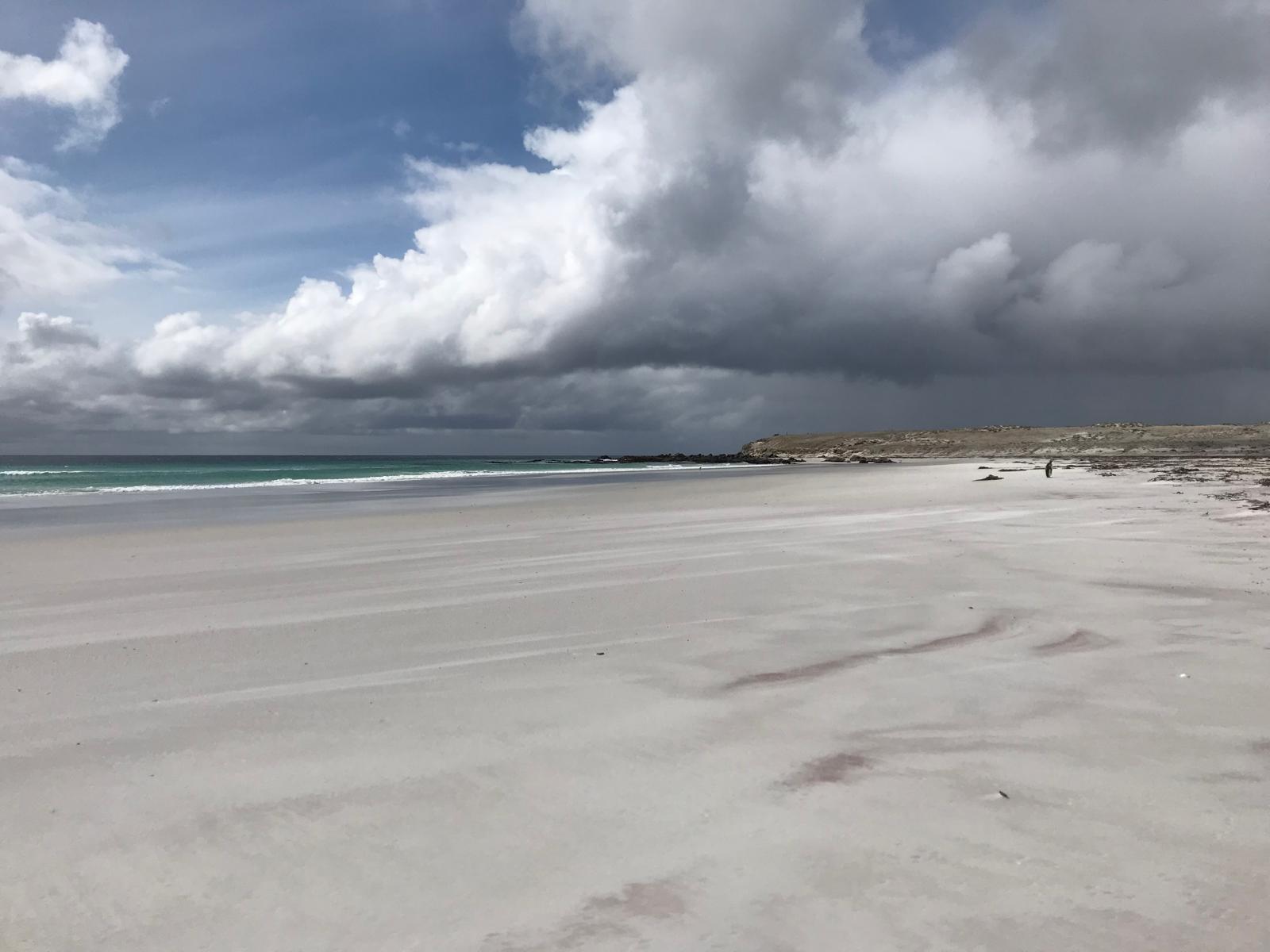
Images above: An immaculate beach at Volunteer Point. Andy says that, despite the pristine environment of the Falklands, peat degradation and runoff has likely caused huge carbon and nitrogen pollution of waterways, causing oxygen depletion, carbon dioxide enrichment, and increases in mineral nutrients.
In June this year, Andy visited the UK Parliament for a special roundtable discussion with the ‘Falkland Islands All-Party Parliamentary Group’. The session highlighted the important contribution the Falkland Islands makes to global scientific research – especially in marine science, ecology, and climate studies – thanks to its unique and rich biodiversity in the South Atlantic, and also the various environmental challenges facing the islands.
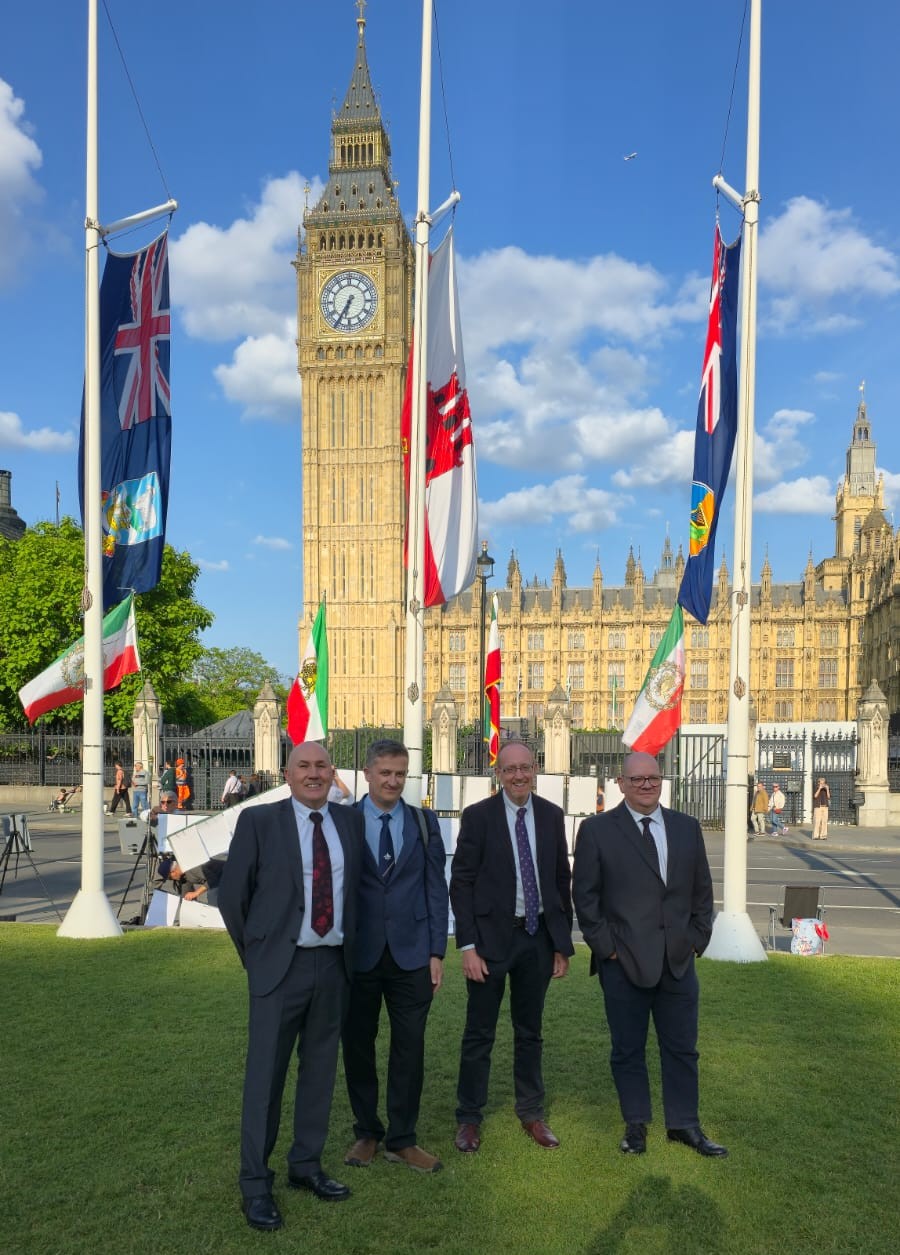
Image caption: From left to right, Prof. Andy Rees, Dr Simon Morley, Prof. Chris Evans and Dr Paul Brickle.
Andy describes some of the key issues discussed.
“The APPG meeting was hosted by the Falkland Islands representative in the UK, Richard Hyslop, and SAERI Chief Executive Dr Paul Brickle. Presentations were made by Paul, myself, Professor Chris Evans from UKCEH, and Dr Simon Morley from BAS. Each of us highlighted aspects of our work which reflected not only the unique and remarkable ecosystem of the Falklands, but also reflected on the islands’ vulnerability to climate change and human activities. A commonality between my talk and that of Chris Evans in particular was the degradation of the peat soils inherent to the whole of the archipelago.”
“Chris is a terrestrial and freshwater biogeochemist, who reflected on the degradation of natural vegetation following intensive grazing which, coupled with a drier climate, has led to areas of soil loss and a general reduction in the peat soils to sequester carbon.”
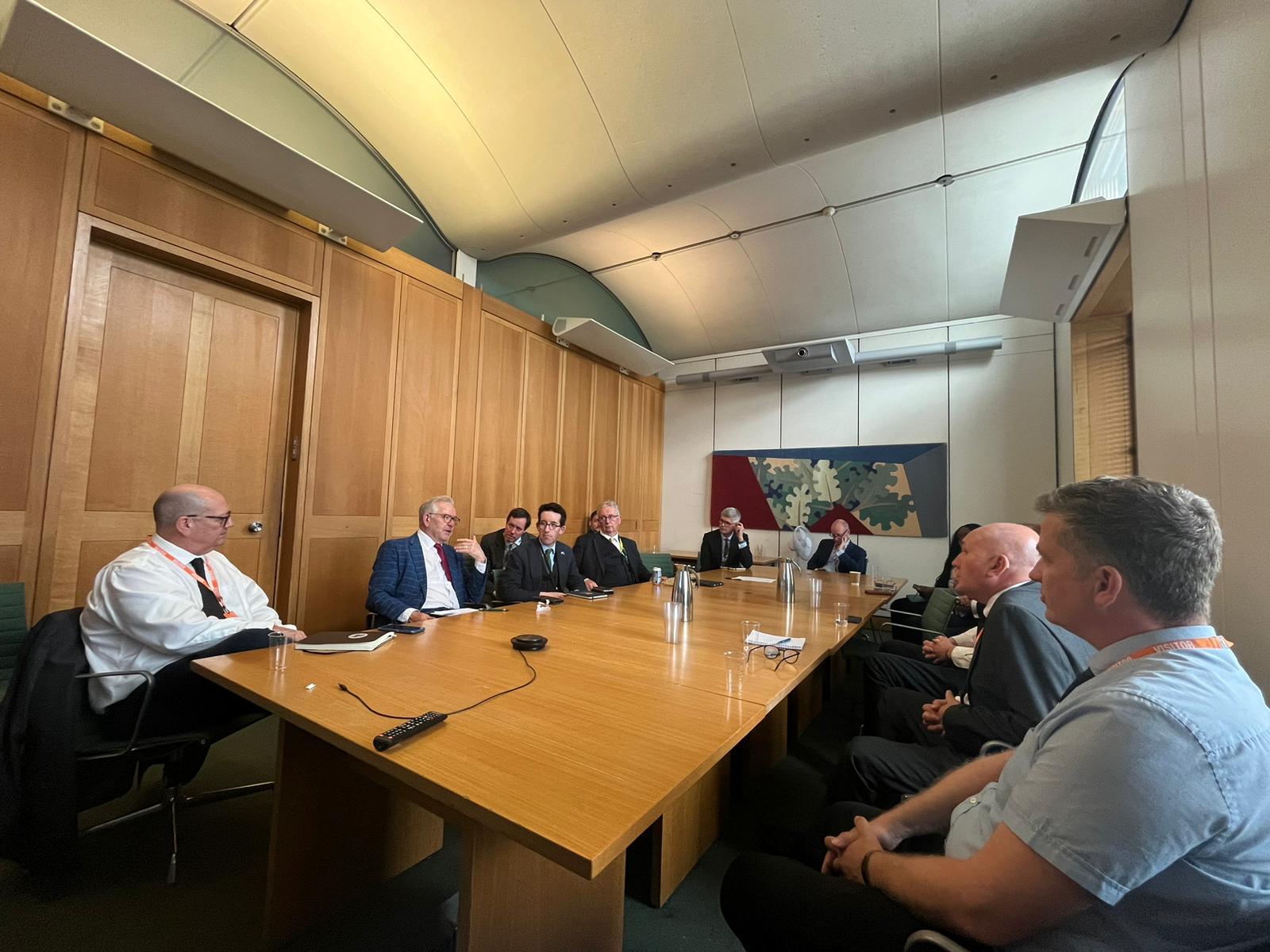
Image caption: the roundtable underway.
“My own talk concentrated on the fate of peat, which was lost from the land and had subsequently accumulated on the seabed. Our pilot study has shown that rather than this terrestrial material being sequestered further in coastal waters, it has not only vastly enriched carbon and nitrogen pools, it has stimulated microbial activity – so that localised regions of the coastal waters are becoming deoxygenated, and are actually providing an additional source of CO2 and mineral nutrients.”
“It is often considered that terrestrially derived material arriving in coastal waters is often ‘locked-up’ and provides a means to remove carbon from the atmosphere. Here we show that carbon that had been locked into peat-soils is actually being re-released and available for exchange into the atmosphere. The Members of Parliament and the Lord’s present were obviously quite concerned, and said that they would share our findings with their peers and encouraged further activity from all concerned.”
“The PML team are currently writing our paper on initial findings, and with support from SAERI and the Antarctic Research Trust, will be returning this time to West Falkland in November of this year.”
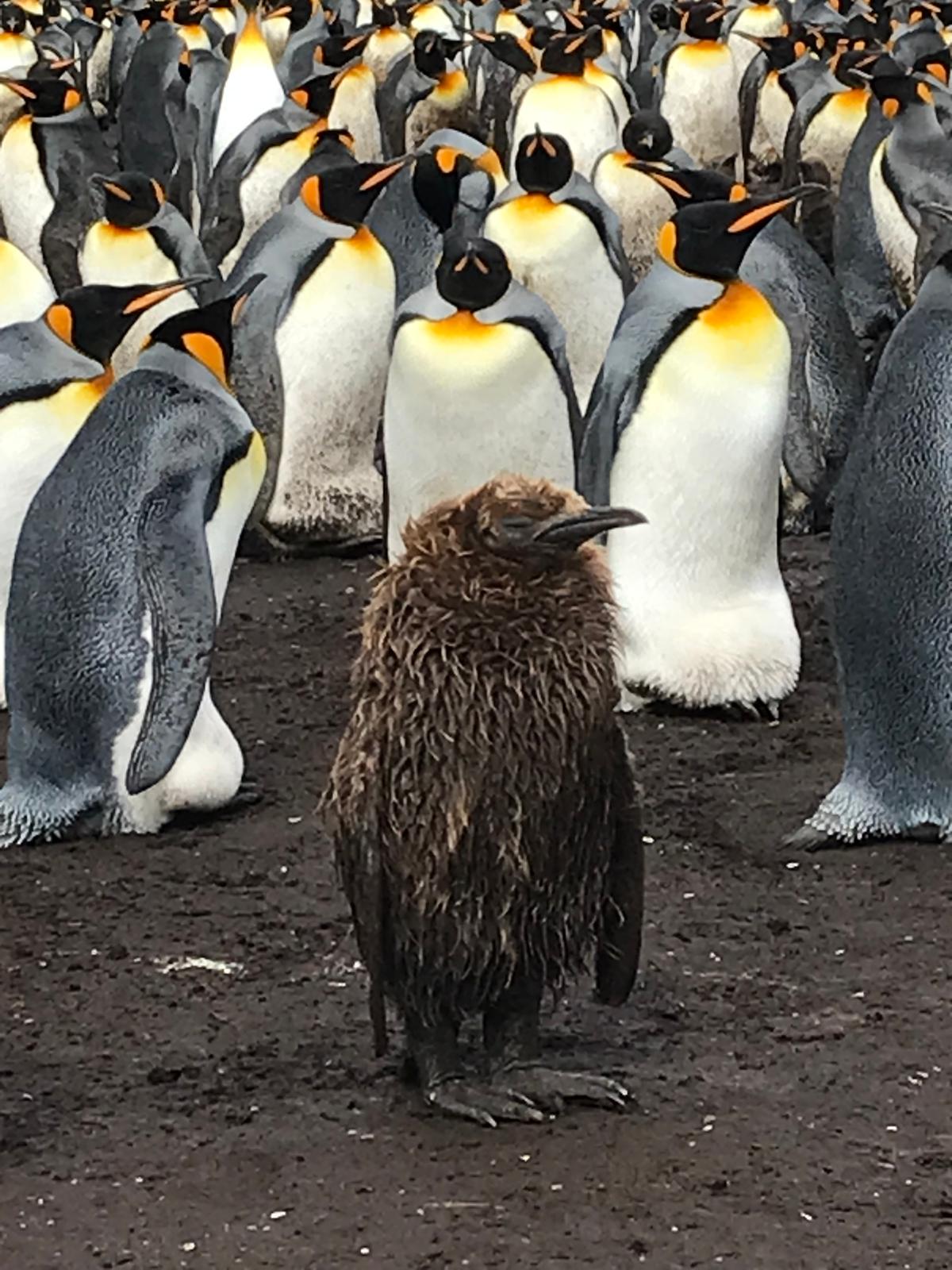
Image caption: To conclude, a favourite photo of Andy’s, “One ugly duckling that gives joy and inspiration.”
